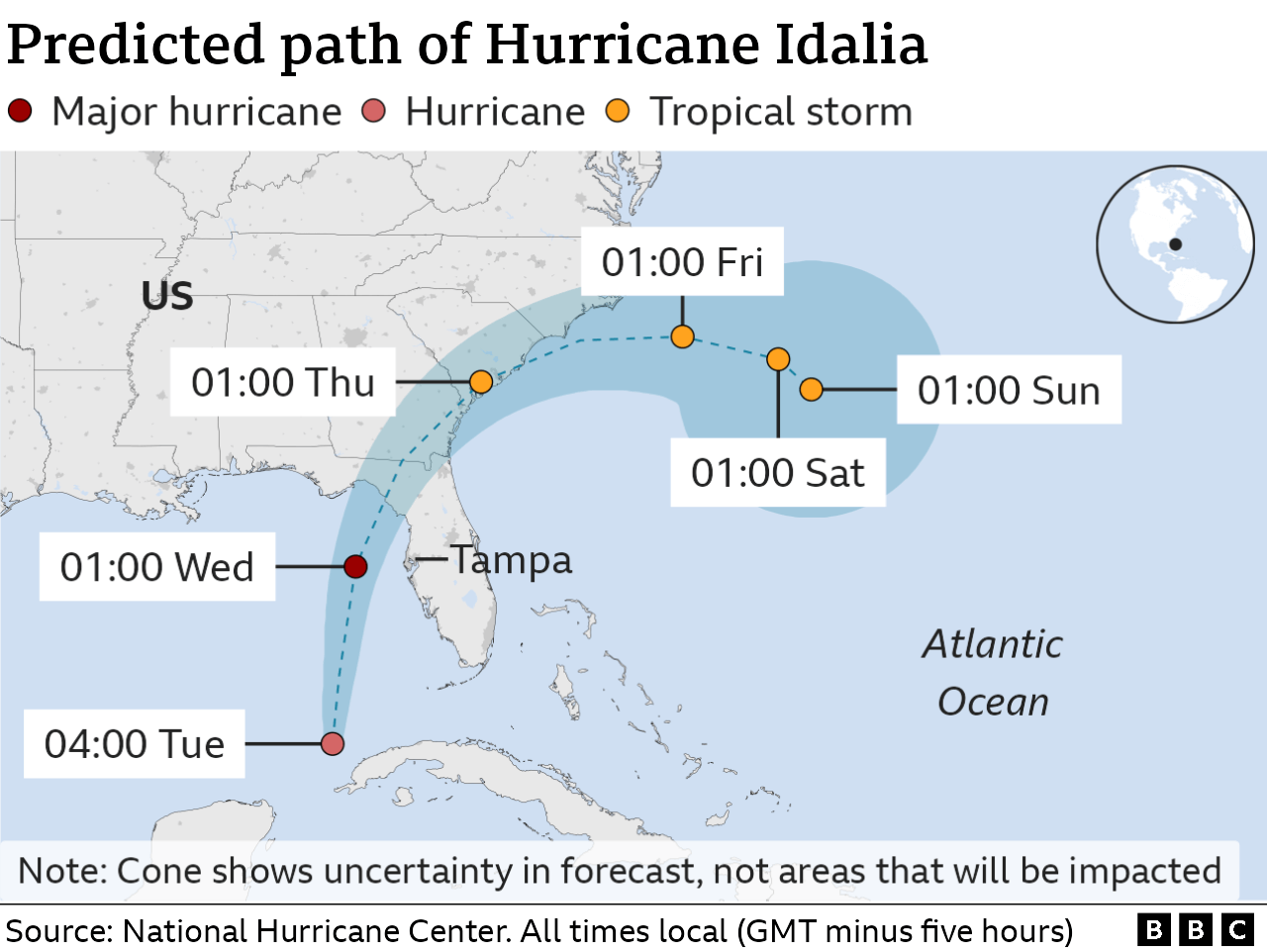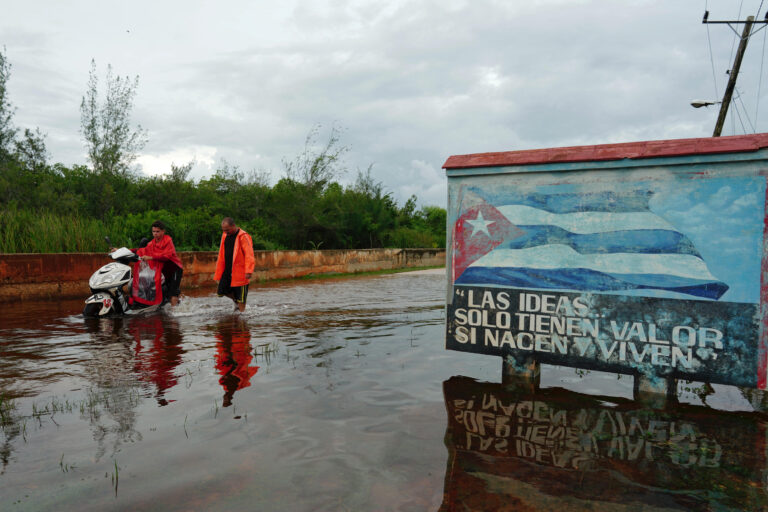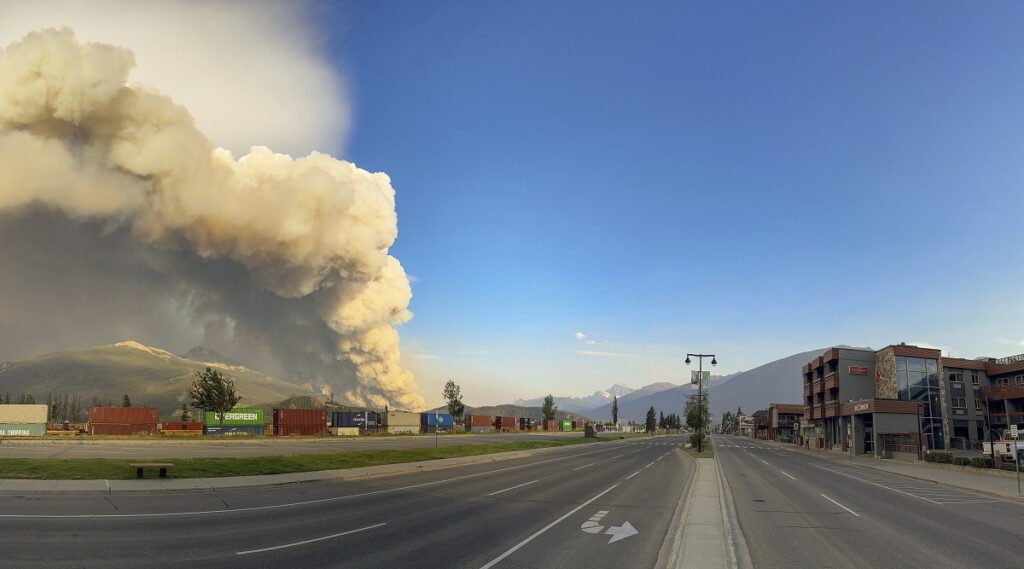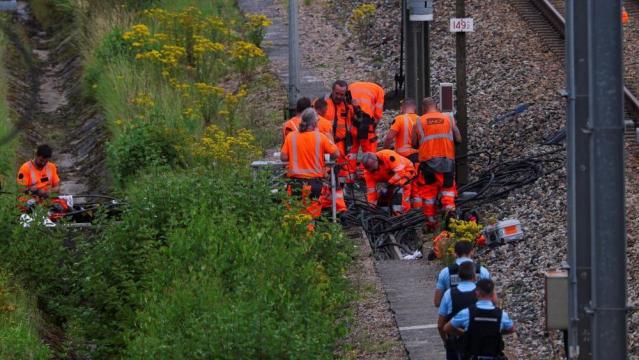Tropical Storm Idalia has strengthened into a hurricane as it barrels towards Florida, with officials warning of potential destruction and risk to life.
It will intensify into an “extremely dangerous major hurricane”, forecasters say, before slamming into the state’s western shoreline on Wednesday.
Much of Florida, including Tampa and Orlando, will probably be affected.
“Don’t be complacent. Don’t get relaxed,” Mayor Dan Allers of Fort Myers Beach earlier told residents.
he coastal city, which is still recovering from last year’s deadly Hurricane Ian, is one of many areas of south-west Florida where residents are weighing whether to evacuate.
Some 14 million people in the state are under hurricane and weather warnings, owing to Idalia’s uncertain path as it gathers force and moves northward over the Gulf of Mexico.
“This is going to be a powerful hurricane,” Governor Ron DeSantis said at a news conference on Monday. “This is absolutely going to impact the state of Florida in many, many ways.”
President Joe Biden has approved an emergency declaration for the state in preparation for it making landfall. Governor DeSantis, meanwhile, has declared a state of emergency in dozens of counties.
Mr DeSantis said several counties on the Gulf Coast would be forced to evacuate and schools would also close. He encouraged Florida residents in low-lying coastal areas to seek higher ground.

“Floridians, you need to be executing your plans now,” he said. “Buckle up for this one.
“There’s going to be destruction of houses and homes and structures,” said David DeCarlo, director of Hernando County Emergency Management. “This is going to be [a] life-impacting storm surge.”
Idalia is expected to bring sustained winds topping at least 111mph (179kph) on Wednesday before coming ashore in Big Bend later in the day.
In Cuba, thousands evacuated towns along the island’s west coast as Idalia skirted past and brought intense rain and winds on Monday.
Residents battened down homes and secured fishing boats, while brown floodwaters had swamped the small fishing village of Guanimar, south of Havana, by mid-afternoon.
“We’ve had two days of rain already,” Yadira Alvarez, 34, told Reuters on Monday. She said stormwater had already swelled to knee-height inside her home.
In Florida, Governor DeSantis said more than 1,100 National Guardsmen had been mobilised with 2,400 high-water vehicles and other rescue equipment.
Officials have prepared 400,000 gallons of fuel to be deployed at petrol stations along evacuation routes.
State officials also warned that many residents in the area would be without power as the storm took hold.
They said the major threat to life would come from storm surges, meaning walls of seawater that are pushed inland by the hurricane’s high winds.
Much of the Florida coast is under warnings for surges such as these, with some of up to 11ft (3.3m) forecast for several north-western towns.
The states of Georgia, North Carolina and South Carolina could see heavy rainfall as well, forecasters said.
Far to the east of Idalia, Hurricane Franklin, the first major hurricane of the season, risked bringing life-threatening storm surges to the US East Coast and Bermuda. It is not, however, expected to pose a serious threat on land.
The impact of climate change on the frequency of tropical storms is still unclear, but increased sea surface temperatures warm the air above and make more energy available to drive hurricanes. As a result, they are likely to be more intense with more extreme rainfall.
BBC



























